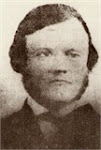According to Christopher Hill, the eminent historian of the English Civil War, the practice of a legislative body sitting as a 'committee of the whole' was first devised in the reign of James I (1604-1625) as a way to loosen the king's control of Parliament. At that time the Speaker was "invariably a royal nominee" who managed debate in the king's favor. Once the House of Commons went into committee of the whole it chose one of its own leaders as chairman of the 'committee'. At times the body resorted to more direct means to limit the Speaker's, and thus the king's, power. In 1629 Charles I ordered the Speaker to dissolve Parliament, but members physically restrained the Speaker to prevent his dissolving the body before the Commons could pass laws restricting the King's powers.
Century of Revolution, 1603-1714 (Norton Library History of England) Christopher Hill
Friday, November 23, 2007
Subscribe to:
Post Comments (Atom)
















OK. It is your blog, but could your reveal why this is important at this time.. I would be very appreciative..
ReplyDeletethanks.
Important? Hey, I recently posted a YouTube video of a Viking battle reenactment, so important isn't really a requisite!
ReplyDeleteI've been reading about the English Civil war and thought it was an interesting detail.
(Of course, I'm not revealing my REAL reason for this post about parliamentray procedure. Bwa-ha-ha-ha!)
This comment has been removed by a blog administrator.
ReplyDeleteThis comment has been removed by a blog administrator.
ReplyDeleteThis comment has been removed by a blog administrator.
ReplyDeleteThis comment has been removed by the author.
ReplyDelete